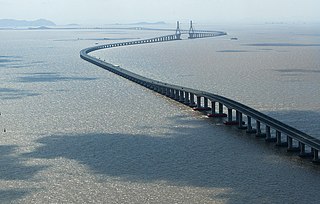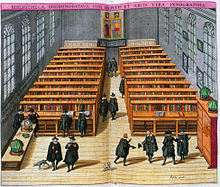
Science and technology in China have developed rapidly during the 1980s to 2020s, and major scientific and technological achievements have been made since the 1980s. From the 1980s to the 1990s, the Chinese government successively launched the "863 Plan" and the "Strategy for Rejuvenating the Country through Science and Education", which greatly promoted the development and progress of China's science and technology. The Chinese government has placed emphasis through funding, reform, and societal status on science and technology as a fundamental part of the socio-economic development of the country as well as for national prestige.
Technology transfer (TT), also called transfer of technology (TOT), is the process of transferring (disseminating) technology from the person or organization that owns or holds it to another person or organization, in an attempt to transform inventions and scientific outcomes into new products and services that benefit society. Technology transfer is closely related to knowledge transfer.
Research funding is a term generally covering any funding for scientific research, in the areas of natural science, technology, and social science. Different methods can be used to disburse funding, but the term often connotes funding obtained through a competitive process, in which potential research projects are evaluated and only the most promising receive funding. It is often measured via Gross domestic expenditure on R&D (GERD).

Science and technology in Brazil has entered the international arena in recent decades. The central agency for science and technology in Brazil is the Ministry of Science and Technology, which includes the CNPq and Finep. This ministry also has a direct supervision over the National Institute for Space Research, the National Institute of Amazonian Research, and the National Institute of Technology (Brazil). The ministry is also responsible for the Secretariat for Computer and Automation Policy, which is the successor of the SEI. The Ministry of Science and Technology, which the Sarney government created in March 1985, was headed initially by a person associated with the nationalist ideologies of the past. Although the new minister was able to raise the budget for the science and technology sector, he remained isolated within the government and had no influence on policy making for the economy.

The Ministry of Education, Culture and Science is the Dutch Ministry responsible for education, culture, science, research, gender equality and communications. The Ministry was created in 1918 as the Ministry of Education, Arts and Sciences and had several name changes before it became the Education, Culture and Science in 1994. The Ministry is headed by the Minister of Education, Culture and Science, currently Robbert Dijkgraaf.

Science and technology in Portugal is mainly conducted within a network of research and development (R&D) units belonging to public universities and state-managed autonomous research institutions. There are also non-state-run research institutions and some private R&D projects developed by companies.

After independence, Jawaharlal Nehru, the first prime minister of India, initiated reforms to promote higher education and science and technology in India. The Indian Institute of Technology (IIT)—conceived by a 22-member committee of scholars and entrepreneurs in order to promote technical education—was inaugurated on 18 August 1951 at Kharagpur in West Bengal by the minister of education Maulana Abul Kalam Azad. More IITs were soon opened in Bombay, Madras, Kanpur and Delhi as well in the late 1950s and early 1960s along with the regional RECs (now National Institutes of Technology. Beginning in the 1960s, close ties with the Soviet Union enabled the Indian Space Research Organisation to rapidly develop the Indian space program and advance nuclear power in India even after the first nuclear test explosion by India on 18 May 1974 at Pokhran.

Research and development intensity is generally defined as expenditures by a firm on its research and development (R&D) divided by the firm's sales. There are two types of R&D intensity: direct and indirect. R&D intensity varies, in general, according to a firm's industry sector, product knowledge, manufacturing, and technology, and is a metric that can be used to gauge the level of a company's investment to spur innovation in and through basic and applied research. A further aim of R&D spending, ultimately, is to increase productivity as well as an organization's salable output.

The Dutch Research Council is the national research council of the Netherlands. NWO funds thousands of top researchers at universities and institutes and steers the course of Dutch science by means of subsidies and research programmes. NWO promotes quality and innovation in science. NWO is an independent administrative body under the auspices of the Dutch Ministry of Education, Culture and Science. NWO directs its approximate budget of 1 billion euros towards Dutch universities and institutes, often on a project basis. Also, NWO has its own research institutes and facilitates international cooperation. Current president of NWO since April 1, 2021 is Marcel Levi. Former NWO presidents include Stan Gielen, Peter Nijkamp and Jos Engelen.

Science policy in Malaysia is regulated by the Ministry of Science, Technology, and Innovation. The ministry focuses on five areas: biotechnology, ICT policy, industry, sea to space and core science and technology. Other ministries, such as the Ministry of Agriculture and the Ministry of Health also have science departments. Training in scientific areas was promoted during the 1970s and 1980s. From 1987 to 1997 research and development used 0.24% of GNP, and in 1998 high-tech exports made up 54% of Malaysia's manufactured exports.
Expenditure for scientific research and Development in Albania does not exceed 0.18% of GDP, which marks the lowest level in Europe. Economic competitiveness and exports are low, with the economy still heavily skewed towards low technology.

The Science and Technology Information Center (STIC) is an Ethiopian organisation which provides information to support scientific and technological (S&T) activities in the country. STIC has published information on the financing of research and development and on the nature and progress of innovative projects, and in 2014 was planning to introduce bibliometric monitoring of publications in S&T. The center has also provided information and communications technology facilities including a digital library, a patent information system, an automated personnel management system, and a S&T-related database.
Science and technology is Jordan's growing economic sector. This growth is occurring across multiple industries, including information and communications technology (ICT), solar and wind energy and nuclear technology.
Science and technology are small, but emerging fields in Nepal. The Ministry of Education, Science and Technology is the apex government body tasked with the responsibility of overseeing the development of science and technology in the country.
This article examines trends and developments in science and technology in Zimbabwe since 2009.
Science and technology in Tanzania describes developments and trends in higher education, science, technology, innovation policy, and governance in the United Republic of Tanzania since the turn of the century.
Science and technology in Armenia describes trends and developments in science, technology and innovation policy and governance in Armenia.
Science and technology in Kazakhstan – government policies to develop science, technology and innovation in Kazakhstan.
This article summarizes the development of science and technology in Cambodia from a policy perspective.
The main managing agency responsible for science and technology (S&T) in Vietnam is the Ministry of Science and Technology (MOST). MOST's responsibilities include scientific research, technology development and innovation activities; development of science and technology potentials; intellectual property; standards, metrology and quality control; atomic energy, radiation and nuclear safety; and state management on public services in fields under the Ministry’s management as stipulated by law.














